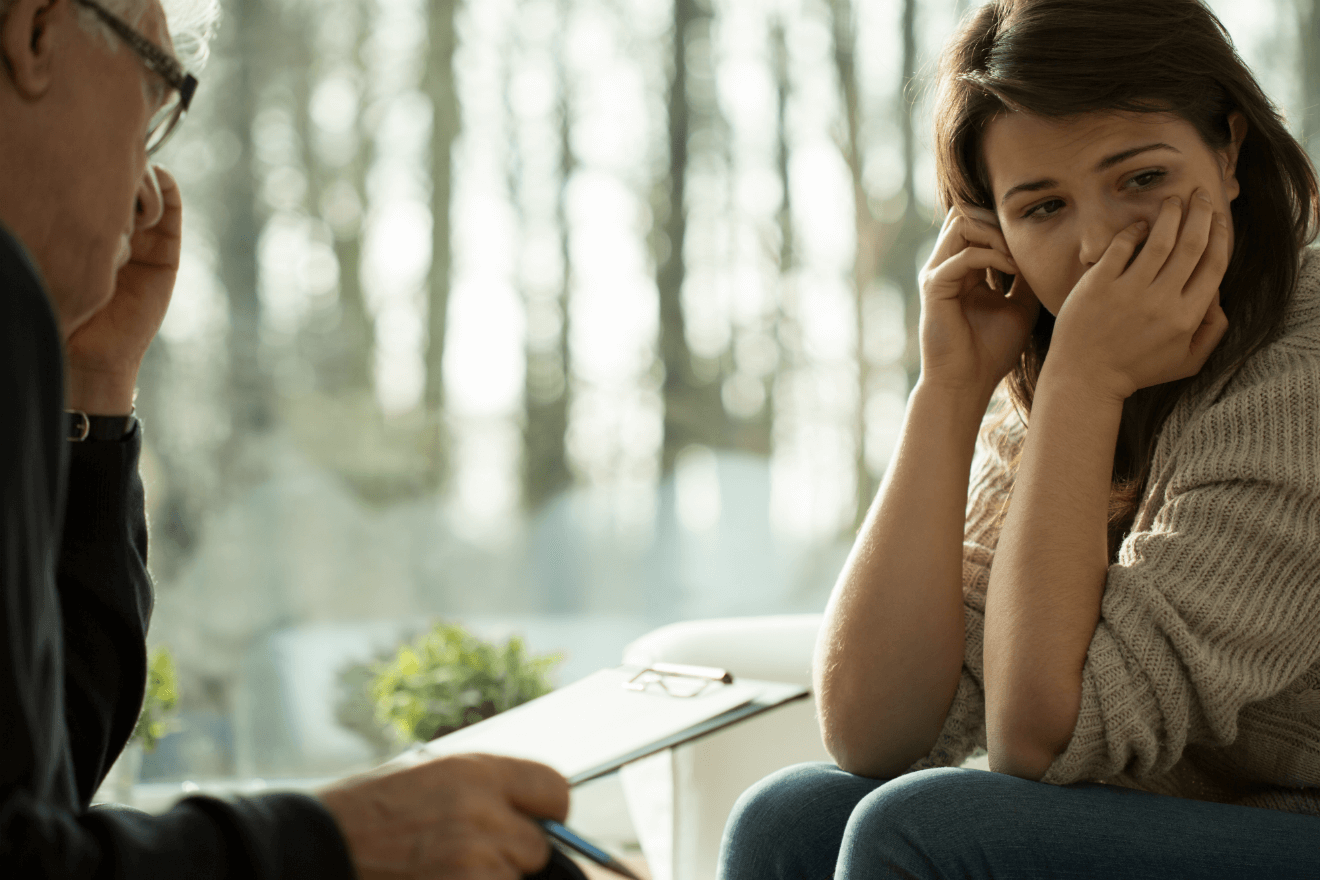Anxiety is a normal reaction to stress and can be beneficial in some situations. It can alert us to dangers and help us prepare and pay attention. Anxiety disorders differ from normal feelings of nervousness or anxiousness, and involve excessive fear or anxiety. Anxiety disorders are the most common of mental disorders and affect nearly 30% of adults at some point in their lives. But anxiety disorders are treatable and a number of effective treatments are available. Treatment helps most people lead normal productive lives.
These feelings of anxiety and panic interfere with daily activities, are difficult to control, are out of proportion to the actual danger and can last a long time. You may avoid places or situations to prevent these feelings. Symptoms may start during childhood or the teen years and continue into adulthood.
While having an anxiety disorder can be disabling, preventing you from living the life you want, it’s important to know that you’re not alone. Anxiety disorders are among the most common mental health issues—and are highly treatable. Once you understand your anxiety disorder, there are steps you can take to reduce the symptoms and regain control of your life.
The types of anxiety vary based on symptoms and triggers, but all interfere with daily activities. Here’s a closer look at five common anxiety disorders:
Table of Contents
Generalized Anxiety Disorder (GAD)
People with GAD feel excessive anxiety or worry on most days for at least six straight months. They may feel restless, on edge, or easily tired. They may also experience concentration problems, irritability, muscle tension, or sleep issues.
Panic Disorder
People with panic disorder experience panic attacks. These are sudden feelings of terror when no real danger is present. Physical symptoms include a fast heartbeat, chest or stomach pain, and breathing difficulty. People may also feel weakness or dizziness, sweating, chills, or numb hands. It may even feel like having a heart attack. Panic disorder is more common in women than men.
Obsessive-Compulsive Disorder (OCD)
If you have OCD, you may experience frequent and upsetting obsessions or compulsions. You may feel an overwhelming urge to repeat certain behaviors. Common obsessions include a fear of dirt or germs, a fear of getting hurt, or wanting to arrange things in certain ways. People with OCD often fixate on these obsessions and can have thoughts and rituals that interfere with their daily life.
Phobia Disorders
A phobia is an intense fear of or aversion to specific objects or situations. This fear is out of proportion to the actual danger caused by the situation or object. People with a phobia may experience irrational worry and take steps to avoid the object or situation. They may also experience immediate anxiety upon encountering the feared object or situation. Common phobias include flying, heights, animals, and injections.
Post-Traumatic Stress Disorder (PTSD)
PTSD occurs in people who have lived through or seen a traumatic event. These events may include war, a natural disaster, a serious accident, or physical or sexual abuse. PTSD may cause flashbacks to the event, trouble sleeping or nightmares, lonely feelings, or angry outbursts. People with PTSD may feel worried, guilty, or sad.
The causes of anxiety disorders are currently unknown but likely involve a combination of factors including genetic, environmental, psychological and developmental. Anxiety disorders can run in families, suggesting that a combination of genes and environmental stresses can produce the disorders.
Different anxiety disorders have their own distinct sets of symptoms. This means that each type of anxiety disorder also has its own treatment plan. But here at People Psychology Brighton, there are common types of treatment that are used.
- Psychotherapy, including cognitive behavioral therapy
- Medications, including antianxiety medications and antidepressants
- Complementary health approaches, including stress and relaxation techniques
The first step is to see your doctor to make sure there is no physical problem causing the symptoms. If an anxiety disorder is diagnosed, a mental health professional can work with you on finding the best treatment. Unfortunately, many people with anxiety disorders don’t seek help. They don’t realize that they have an illness for which there are effective treatments.
If your worries, fears, or anxiety attacks have become so great that they’re causing extreme distress or disrupting your daily routine, it’s important to seek professional help. Your worries may not go away on their own, and they may get worse over time if you don’t seek help. See your doctor or a mental health provider before your anxiety gets worse. It’s easier to treat if you get help early.
If you’re experiencing a lot of physical symptoms, you should start by getting a medical checkup. Our doctor here at Brighton can check to make sure that your anxiety isn’t caused by a medical condition, such as a thyroid problem, hypoglycemia, or asthma. Since certain drugs and supplements can cause anxiety, our doctor will also want to know about any prescriptions, over-the-counter medications, herbal remedies, and recreational drugs you’re taking.
If the physician rules out a medical cause, the next step is to consult with a therapist who has experience treating anxiety disorders. Brighton’s therapist will work with you to determine the cause and type of your disorder and devise a course of treatment.
Psychological treatments are proven to help people with anxiety by providing them with coping mechanisms and gradually changing their mindset to improve how they deal with life’s stressors. Sufferers are taught how to manage their anxiety efficiently.
Our psychologists can give you the help you need if you think you’re suffering from any anxiety disorder. We can provide a safe, calm and nurturing environment which can give you the confidence you need to speak about what’s troubling you. Regardless of the reason why you have anxiety, we’ll seek to understand the underlying reason why it started in the first place and the best treatment for you. Book your appointment today and allow us to help you start your journey to an anxiety free future. Call now!

